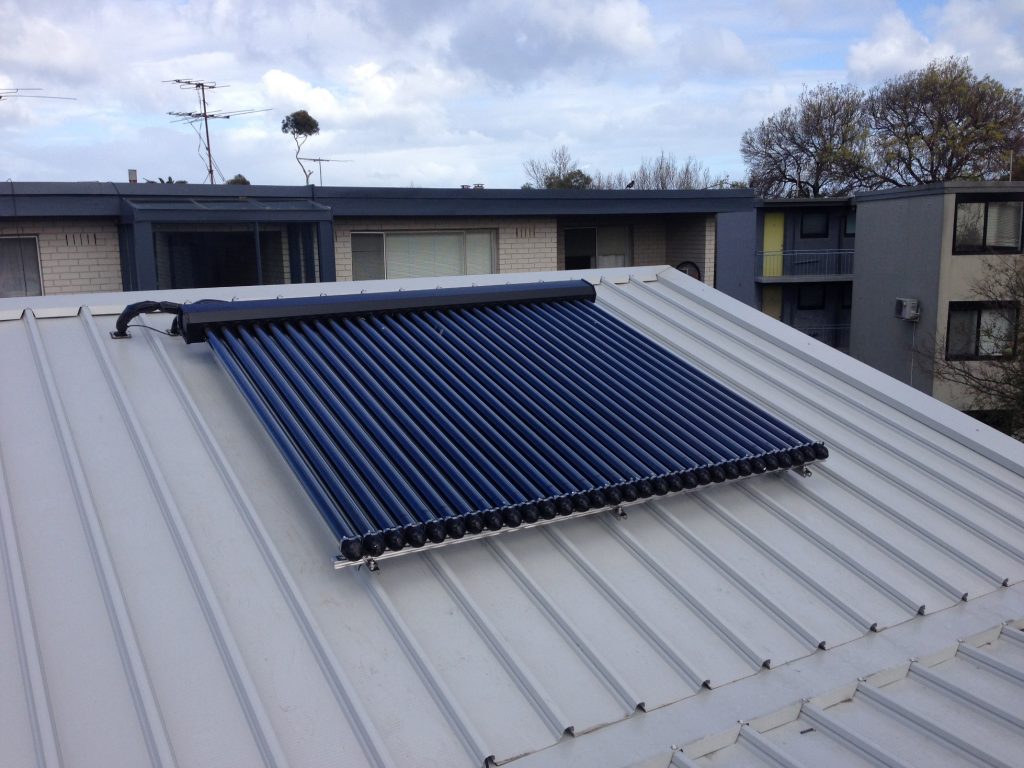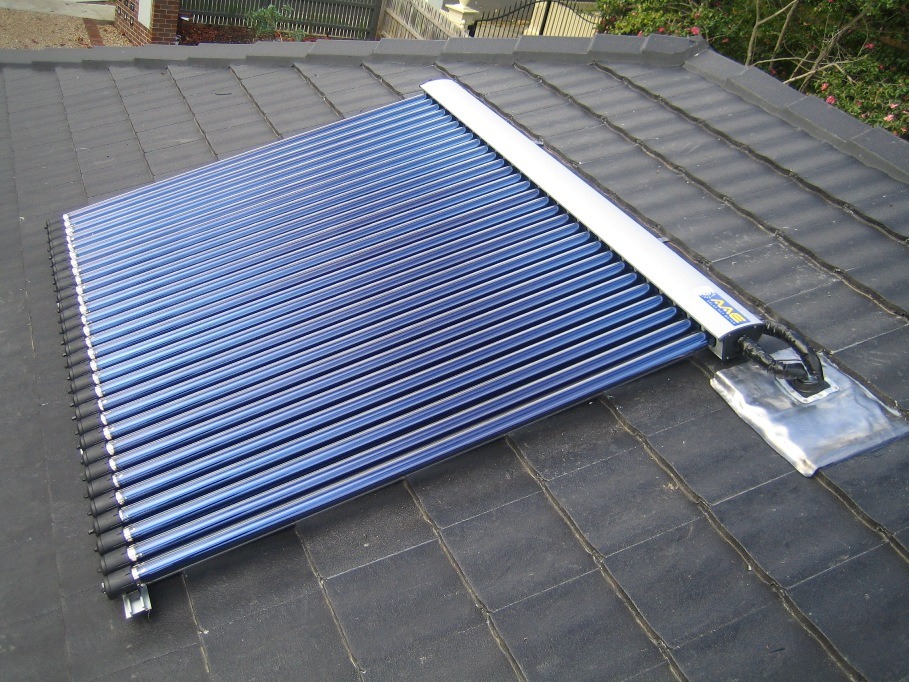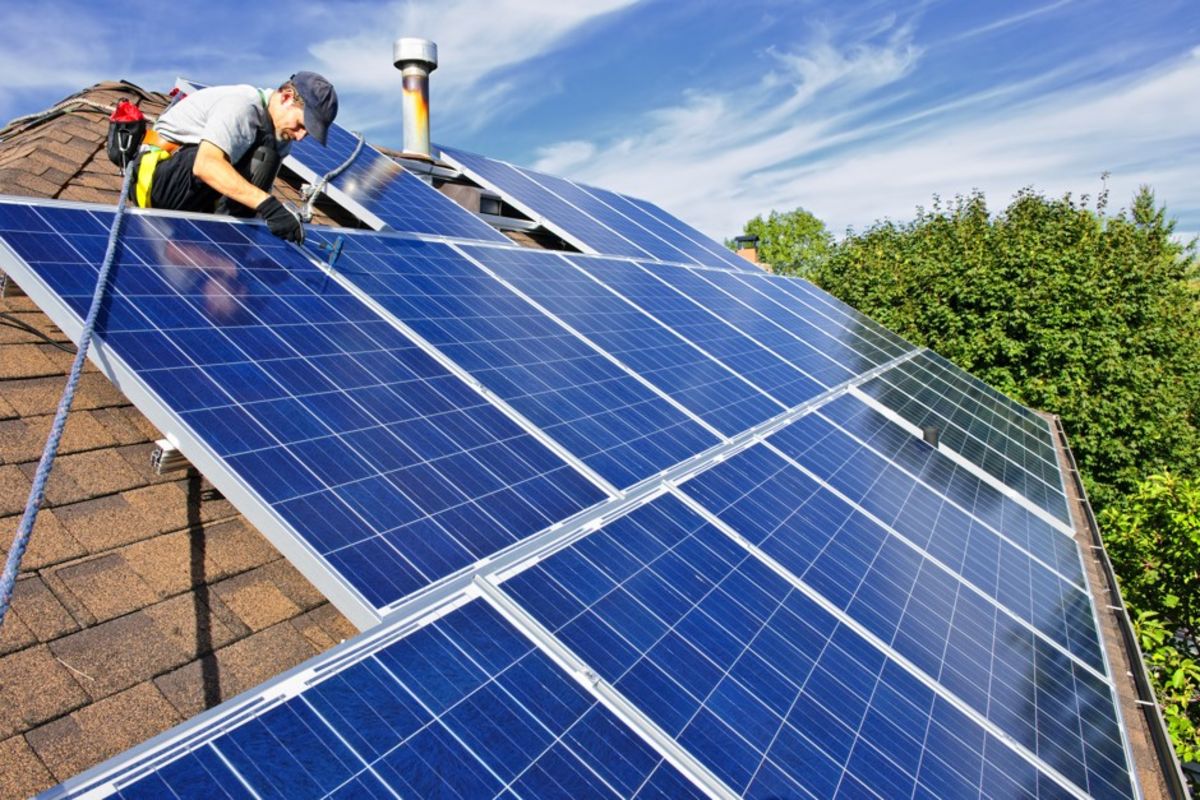
Do you wonder how a home can run on solar energy alone? Do you want to do your part for the environment by switching to renewable energy sources for your home’s electricity needs?
More and more people are switching to solar energy to power their homes as they become more aware of climate change and the rising cost of conventional energy sources.
Clean and renewable, solar power has the potential to replace more expensive and less sustainable forms of energy like fossil fuels. This article will discuss the process of using solar energy to power a home.
The solar panels, inverters, and batteries that make up a solar power system are the first topic of our discussion.
Here, we’ll break down the inner workings of a solar panel, which turns sunlight into usable electricity, and an inverter, which transforms that DC electricity into the alternating current (AC) power used to run a house.
Batteries, which can be used to store extra energy produced by the solar panels for use at night or during periods of low sunlight, will also be discussed as part of a solar power system’s infrastructure.
We will take a look at the various solar power systems available, such as those that are connected to the grid, those that operate independently, and those that combine the two. We’ll go over the benefits and drawbacks of each system to help homeowners choose the right one for their home.
So, How Exactly Do Those Solar Panels Produce Energy?
Our report’s most intriguing finding is that consumers who have installed solar panels have higher confidence in their capacity to control and reduce their energy expenses than those who have not.
In light of this, you may wonder how solar panels function for your home if you consider installing them. Let’s dissect the process of turning sunshine into electricity.
The Fundamentals Of How Solar Panels Work
How, therefore, do solar collectors function? Solar cells, often known as photovoltaic cells, are the basic building blocks of solar panels. The term “photovoltaic” refers to the ability of some materials to generate electricity when exposed to light.
Most solar cells use silicon, which is highly purified and can function as a semiconductor if processed properly to generate them. Hence, solar cells can take advantage of silicon’s semiconductor features.
Electrons in solar cells can become energised when they receive particular photons from sunshine. These energised electrons are then free to flow through the solar panel’s wiring and conductors, where they can be converted into usable electricity.
Panels that absorb sunlight and transform it into usable electricity are known as solar panels. Solar panels operate on the photovoltaic effect, which occurs when a material absorbs photons (particles of light) and then releases electrons, creating a circuit.
Silicon cells sit atop a conductive material layer, which is sandwiched between a metal backing and a glass back. To generate electricity, solar panels use silicon cells that release electrons when exposed to sunlight. Once in the metal layer, these electrons generate an electric current as they move through the conductive layer.
Because a single solar cell can only generate a small amount of electricity, panels made up of many solar cells are used to generate much more power.
Unfortunately, most common household appliances run on alternating current (AC) electricity, and the direct current (DC) electricity generated by the solar panel is incompatible with this.
An inverter is needed to transform the DC electricity produced by a solar panel into AC electricity. To make it usable for home appliances, the inverter changes the DC current into AC current.
Solar panels get their maximum sunlight exposure when they are mounted on a roof. The amount of energy produced by a solar panel is affected by its size, efficiency, the orientation of the panel, and the intensity of the sunlight that hits it.
Solar panels, as a form of renewable energy, can supply homes and businesses with clean, long-term power.
Since the price of installing solar panels has dropped significantly in recent years, more and more homeowners are making the switch to solar energy.
What Effect Does Heat And Light Have On Solar Panels?
It’s common knowledge that the Australian summer is one of the sunniest in the world.
The problem with having too much light is that it generates heat, and solar panels lose efficiency when exposed to too much heat.
High-efficiency solar power generation in Australia is possible during the spring, fall, and summer, but how can you be certain that your panels will survive?
A high-quality solar panel from a reliable manufacturer will be optimised for use in Australia. Plus, provided the solar panel receives adequate sunlight, you may rest assured that it will perform admirably.
Another common inquiry is whether or not there is such a thing as too much sunlight for such a solar panel to absorb.
While it is true that some light is lost due to reflection, solar panels typically incorporate design elements that catch and re-focus some stray light. However, this can become problematic if the light is “concentrated” on the solar panel (via mirrors, for instance).
Can A Solar Panel-Only House Exist?

It could be appealing to rely only on solar power for your energy needs, either because of the cost savings or the positive environmental impact. When used to remove carbon dioxide from the air, it may have a significant positive impact on the environment.
It can also help you save money by providing free energy for decades. All of a house’s energy needs might theoretically be met by solar panels. Yet, there are a couple of caveats.
We will look at how your solar system might be affected by each one. From reading this article, you will have a better idea of how likely it is that you can power your home using solar energy completely.
What Is Your Energy Consumption?
Your solar panel installation will need to know how much electricity is used in your home to provide for all of your energy needs. Checking your past energy consumption, as represented in your invoices, is the most common approach.
It won’t just be about brushing up on the newest regulations. Creating a solar energy system that can meet all of your needs requires careful consideration of some elements. Naturally, your energy use will change monthly and from season to season.
Cooler spring and fall temperatures brought on by climate change may result in savings on electricity and air conditioner use during the hotter months.
Because of the colder weather and shorter days, winter may lead to higher energy consumption. If you want your solar installation to size a system for your needs properly, they’ll need to understand how much electricity you typically use. Get the most out of solar energy! Our experts offer personalised solar installation Melbourne, designed specifically around your home’s energy consumption and local weather conditions.
The local climate and weather are other factors. Compared to Perth, the amount of energy produced by the solar system in Queensland will vary over a year.
No matter where you call home, summer will see a significant uptick in your system’s energy production. To get an accurate prediction of how much power you can produce annually, installers will analyse historical weather data from your area.
The Available Space
It would be best to put solar panels in a sunny spot where they won’t get in the way of your routine. Roofs are typically the best spots for solar panels, but they can also be erected on the ground if that works better for your property.
There must be enough room to install a solar power system large enough to supply all of your home’s energy needs. One 330-watt solar panel takes up around 19.5 square feet of space.
The average home can benefit from a solar system between 5 and 20 kW. You’ll need a setup that can generate enough electricity for a space between 312 and 1189 square feet, provided there are few obstructions to the sun.
In other words, not every roof is the same. More panels may be needed if the roof is on the north side since it receives less sunlight.
The trees that stop your roof may need to be trimmed or removed if they cast long shadows during the day. Some outside factors could disrupt production, including noise from neighbours’ homes, fires, and exhaust fans.
A ground mounting method has the potential for optimal positioning and inclination for solar output, a major benefit. A roof mount is not capable of doing this.
Choosing Between Off-Grid And Grid-Tied Power
The goal of a 100% solar-powered home can be achieved by installing either the off or grid-connected solar power system. The key difference is in what direction your system’s excess power goes and where you turn for energy when it’s not producing any.
Cloudy days, rainy weather, and the nighttime will reduce your system’s ability to create electricity, but you’ll still need to use it. Solar can keep you going during these periods because it generates extra power during the day.
In the case of the off installations, the surplus energy is stored in batteries or sent back into the power grid in exchange for grid credits.
A solar power system that operates independently from the power grid. This means that your home is unable to draw power from the grid.
Yet, going off the grid may require significant financial investment and the adoption of new habits.
The cost of batteries may decrease, but you can still acquire enough power to last through many moonless nights and cloudy days. You need to be conscious of the gap between your energy consumption and the capacity of your system.
The grid-tied solution allows you to generate all the electricity your home needs without investing in expensive batteries to store any surplus.
How Does Solar Power Help You Save Money?
The value of installing solar panels can be estimated by considering the potential savings on your monthly electricity bill. The positive effects on the environment are on the back burner for now.
Offsetting Your Energy Usage
Solar can help you save money on your electricity bill, which can run anywhere from 15 cents to 40 cents per kilowatt-hour (kWh), mostly by lowering your reliance on electricity from your electricity provider.
By giving solar power its due, a system wired into the grid may keep the lights on while using the grid to fill in the gaps.
Depending on how much electricity is used during daylight hours, a typical household could expect solar panels to offset 30%-70% of their energy usage. By putting in a battery storage system, you can bring this percentage closer to 100.
Feed-In Tariff For Surplus Energy
When the solar panel system produces more energy than you use, you may sell the excess to the grid in exchange for a “feed-in tariff,” as the quantity of electricity generated is determined by the sun rather than your energy usage.
It’s important to check with your state’s energy regulator and your electricity retailer (AGL, Origin, etc.) to learn about their specific feed-in tariffs. The average cost of feeding in tariff ranges from 3 cents to 12 cents per kilowatt-hour.
Choosing The Best Solar Power System
After calculating your energy needs, the next step is to select the optimal solution for your dwelling. The amount of energy generated by the typical solar power system changes with the solar panels used.
On a typical day, a 1 kW PV system will generate between 3 and 4.5 kWh of electricity. Its output equals between 1,095 and 1,640 kilowatt-hours (kWh) annually. Since the growth is linear, a solar panel with a 3 kW capacity may generate three times as much energy as a 1 kW one.
To generate roughly 5,000 kW annually, a 5 kW setup is required. The local weather conditions must also be taken into account. You should always have an extra 20% of electricity on hand as a safety net on days with insufficient sunlight.
Get professional advice before putting in a home solar energy system. The best configuration for your needs might be recommended by them. Solar companies in your area can help you discover a setup that is optimal for your needs and the weather conditions where you live.

As people become more conscious of climate change and the rising cost of conventional energy sources, solar power enjoys a surge in popularity.
This article will go over the steps involved in converting your home to run entirely on solar power, as well as the solar panels, inverters, and batteries that makeup such a system.
It will also examine the different types of solar power systems, including grid-connected, standalone, and hybrid models.
The most interesting finding in the report is the comparison between consumers who have and have not installed solar panels on their roofs in terms of their beliefs about their ability to control and reduce their energy costs.
When exposed to sunlight, solar panels are able to convert that energy into electricity.
When exposed to light, the silicon cells’ electrons are free to roam, creating a current as they travel through the conductive material. Direct current (DC) electricity generated by the solar panel is incompatible with the alternating current (AC) electricity required by most home appliances.
In order to convert the direct current (DC) electricity generated by a solar panel into alternating current (AC), an inverter is required.
However, how can you be sure that your panels will survive the spring, fall, and summer when high-efficiency solar power generation is possible in Australia?
As long as the solar panel is of high quality and comes from a reputable manufacturer, it will work very well in Australia.
In most cases, solar panels can provide enough power for a home’s needs, but there are exceptions.
Energy production, residential electricity consumption, and annual weather patterns are all factors. Installers will examine local weather records to estimate your system’s potential annual output.
Installing solar panels in a sunny location that won’t be in the way of daily activities is ideal. The average home can benefit from a solar system between 5 and 20 kW, but you’ll need a lot of space to install one big enough to meet your energy needs.
Even though the system’s ability to generate electricity is diminished on cloudy days, during rainy weather, and at night, solar can keep you running.
In spite of the fact that going off the grid or staying connected to the grid may require a sizable financial investment and a change in lifestyle, it is possible to obtain sufficient power to see you through many cloudy days and moonless nights.
Solar power is a grid-connected option that eliminates the need for expensive batteries while providing homeowners with all the electricity they could ever need.
By offsetting their energy consumption and selling excess to the grid in exchange for a feed-in tariff, they can reduce their monthly electricity costs.
To find out more about feed-in tariffs, contact the energy regulator and electricity provider in your state.
